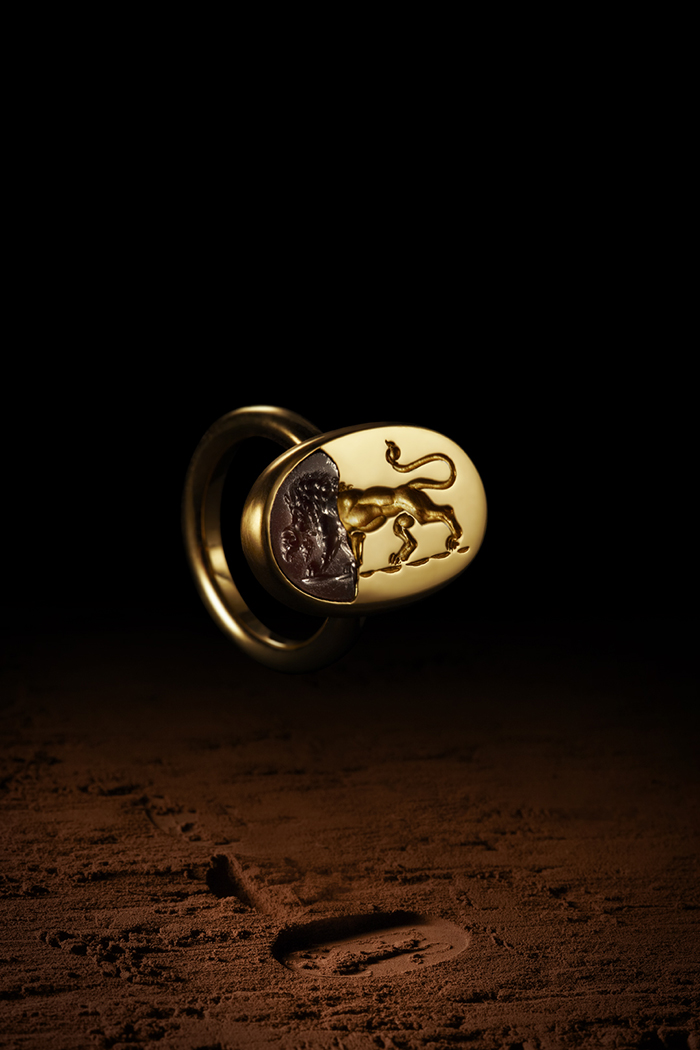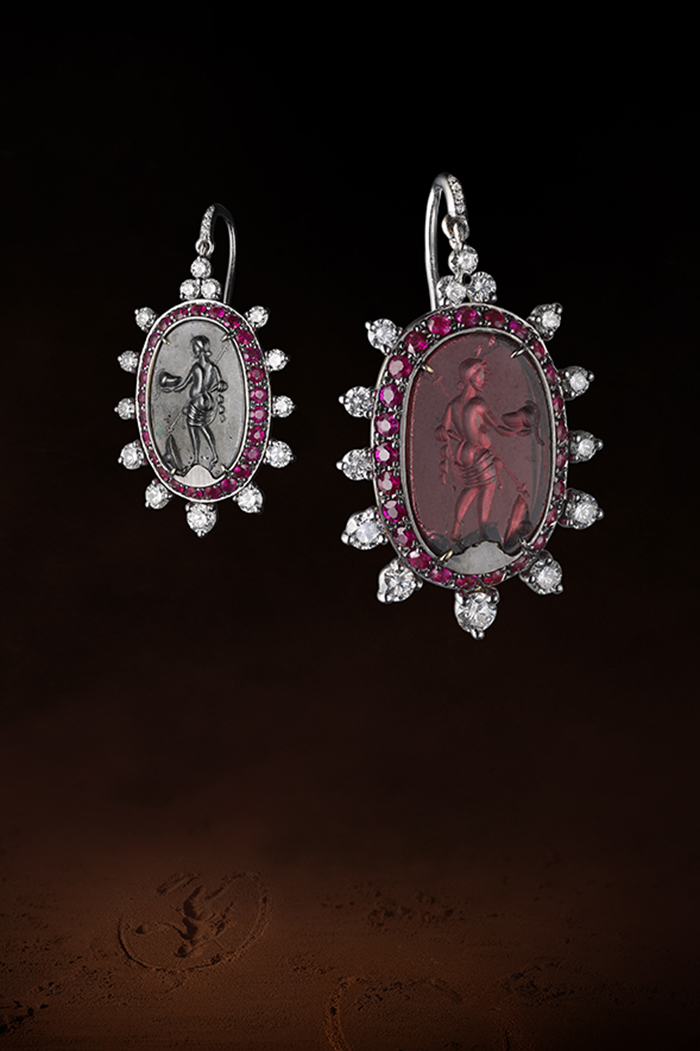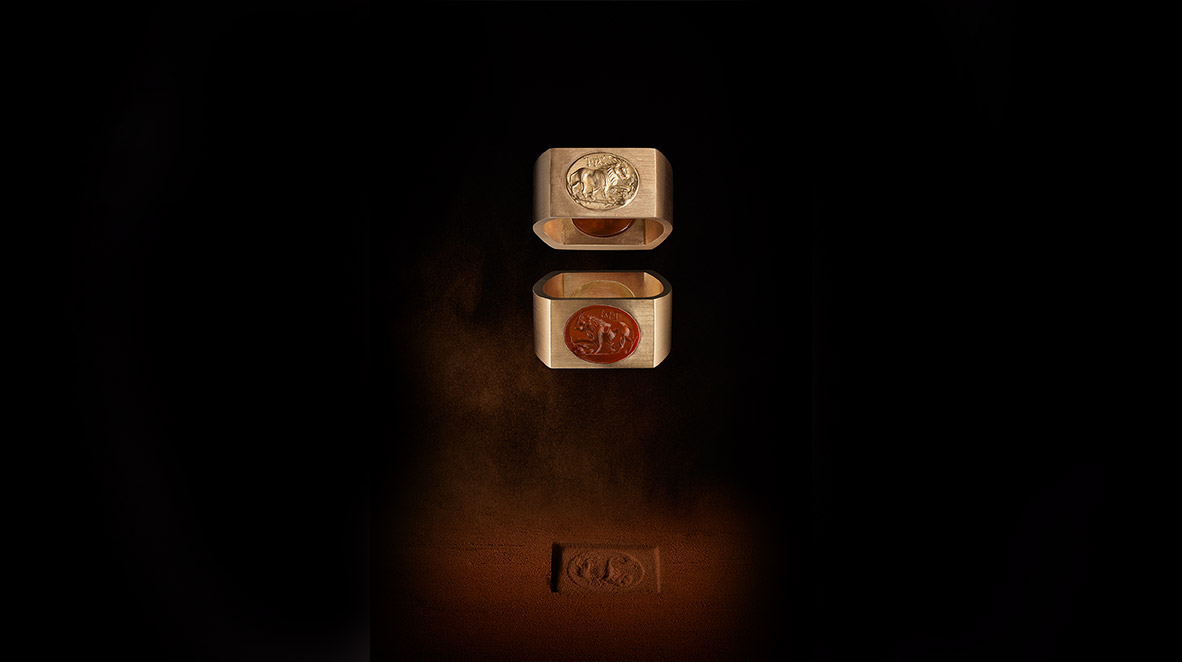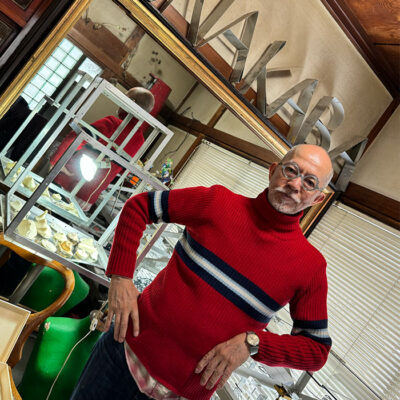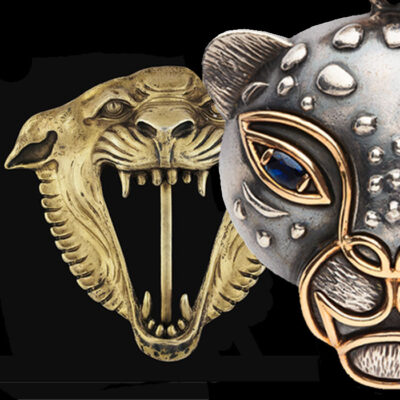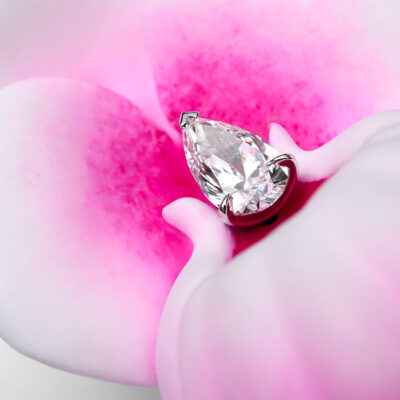Style
13 January 2016
Share
A tribute to intaglios by Marc Auclert
The jeweler Marc Auclert has a predilection for intaglios, engraved stones he mounts into contemporary jewels. He tells about their age-old story.
Writing, alongside language, is at the base of human intelligence; and, at the origin of writing, we find business and… intaglios! Indeed, in the heart of Anatolia and Mesopotamia during the 5th millennium B.C.E., stone seals carved with different patterns were used to fasten and “print” clay seals on bags of goods to be traded: the engraved pattern will slowly evolve to become a “signifier” and is thus the source of the written word…
Glyptic, the art of engraving stones, is one of humanity’s oldest crafts. We distinguish intaglios, which motives are engraved in the depth of the stone, with cameos, where the pattern is carved in relief. The technique is very ancient and remained unchanged until the appearance of motor tools, and only implied the use of a grinding wheel powered through a bow by hand or foot, of an abrasive powder and of water. The stone, opaque, translucent or transparent, is not sculpted but technically polished: numerous minute facets end up forming a full representation. This craft requires incredible dexterity: the stones are small and hard; the job is run blindly under the abrasive paste, minute step by minute step; the pattern is crafted in reverse of the final image that will be revealed once printed in clay or wax.
I’m fascinated with the discreet but immense feat… I hold in my hand an orange carnelian intaglio engraved during the Roman period with a mythological representation and I am overwhelmed by the realization of the adventure of our ancestors. I realize the incredible accumulation of talents and labors invested in this tiny trinket: to mine from Earth’s heart and cut and polish with crude tools the stones; to have them travel through deserts, seas and cities (carnelians were extracted and cut in Northern India); to let the art of the engraver and the jeweler do its wonders to produce a piece of tasteful jewelry… And fantasizing as to to who the original holder was: what were his or her life, its joys and sorrows?
Yes when I caress these intaglios snugly held in the palm of my hand, I allow myself to dream of all these adventures and I try to hear in my mind all the stories they whisper.
Written by Marc Auclert.


